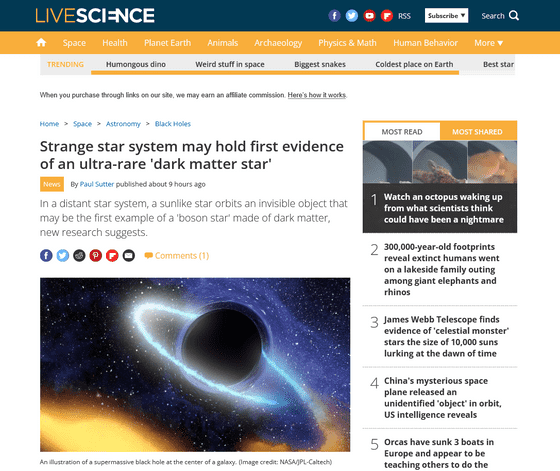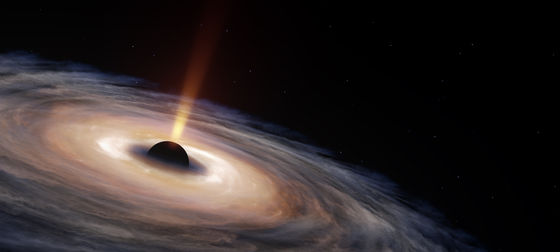Astronomers report they may have found a 'dark matter star'

Dark matter is a mysterious substance that is said to account for 80% of the mass of the universe, and everything, including its identity, is shrouded in mystery. A paper has been published that proposes that a celestial body that was previously observed but dismissed as a black hole may actually be a star made of a candidate for dark matter.
[2304.09140] A Sun-like star orbiting a boson star
Strange star system may hold first evidence of an ultra-rare 'dark matter star | Live Science
https://www.livescience.com/space/black-holes/strange-star-system-may-hold-first-evidence-of-an-ultra-rare-dark-matter-star

This Star Might be Orbiting a Strange 'Boson Star' - Universe Today
The star in question is in a peculiar system observed by the European Space Agency's (ESA) Gaia satellite. The star in this star system is a typical G-type dwarf star with a mass of 0.93, which is a little lighter than the Sun, and almost the same composition as the Sun.
However, the star had a mysterious companion star with about 10 times the mass. The distance between the star and the companion star is 1.4 AU, just the same as the Sun and Mars, and it orbits every 188 days. Most astronomers believe that the mysterious companion star is a dark star that emits no radiation, and that the object is actually a black hole. The general view was that it would be a serious case.
However, there is a puzzling point to this theory. Because a black hole is the result of the death of a massive star, a Sun-like star and an even more massive star must be born at the same time to form the star system in question. While not theoretically improbable, it would take an extraordinary amount of fine-tuning to realize a scenario in which such bodies would maintain their orbits right next to each other for millions of years. , it is argued that other possibilities should be considered.

This time, in a paper published on the preprint server arXiv on April 18, 2023, researchers challenged the theory that ``the mysterious celestial body may actually be a mass of dark matter.''
Dark matter is invisible matter that makes up most of the mass of galaxies, and its identity is still unknown. Many theoretical models assume that dark matter is evenly distributed throughout the galaxy, but some models suggest that dark matter clumps together.
One such theory is the hypothesis that 'dark matter is a new kind of

If there is boson dark matter, it can aggregate to form large clumps that can be the size of a star system or the size of a typical celestial body. Such objects emit no radiation at all, so they look like black holes to observers. Also, since it is invisible, the only way to observe it is to use its interactions with other celestial bodies, just like black holes.
According to researchers, if we assume the existence of boson dark matter and replace black hole-like objects in the system in question with boson stars, we can explain all of the observation data.
In fact, the chances of discovering a Boson star with this announcement are far from high, but the researchers strongly argue for the need for additional observations. Because, even if the mysterious object is not a boson star, it is true that stars orbit extremely compact and dense bodies, and further investigation will further deepen our understanding of Einstein's theory of general relativity. Because you can go deeper. In addition, if boson stars are a perfect model for such exotic objects, we can expect them to help clarify the identity of dark matter.
Related Posts:
in Science, Posted by log1l_ks







